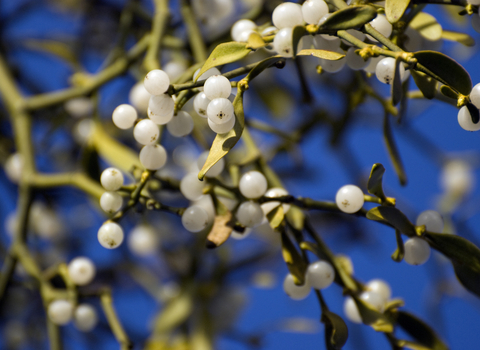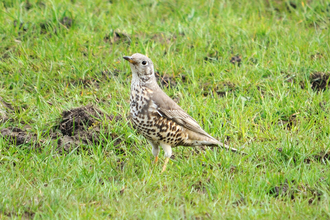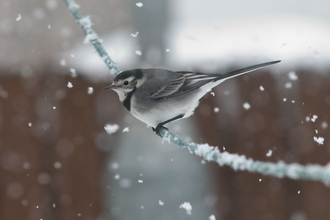Mistletoe
Everyone knows mistletoe: that familiar pair of leaves with the white berry in the middle. But do you really know the plant? The evergreen mistletoe is a parasite. Growing on the branches of other trees, it taps into the boughs of willow, poplar and apple trees for nutrients. Once a common sight in apple orchards it has declined with the shrinking of this traditional working habitat. To spread from tree to tree, mistletoe cleverly offers up its berries to birds. The seeds within the berries are coated in a sticky goo, so when the bird moves on and wipes its beak on the next tree, a seed or two is often left behind, glued in place.
Keep your eyes peeled for this festive favourite
Find mistletoe
Walk through ancient orchards, boughs laden with snow and mistletoe. Herefordshire is still famed for its orchards, which can be both wildlife havens and a source of produce for people. Though many have been lost over the past century, Herefordshire Wildlife Trust manages the orchards at Common Hill, where mistletoe still grows in profusion. You can also find mistletoe in Worcestershire at Knapp & Papermill, and in Lancashire at Pennington Flash.
How to do it
Keep your eyes peeled for the round clumps of mistletoe growing high in the canopy. And maybe take someone special along with you, for that perfect mistletoe moment.
If you can't get to these places
Mistletoe can be found throughout the country and there are some spectacular hanging globes in one of London’s Royal Parks, Bushy Park. Walk down the great avenue where about 70 of the limes are hosts to mistletoe, and about 150 of the hawthorns that give Bushy its name also have good mistletoe growths. The commonest places to find this distinctive plant are in ‘cider country’ - in Somerset, Gloucestershire, Herefordshire and Worcestershire.
More wildlife experiences
From seeing colourful wildflowers to spotting magnificent birds of prey, we can help you get closer to wildlife across the UK.



